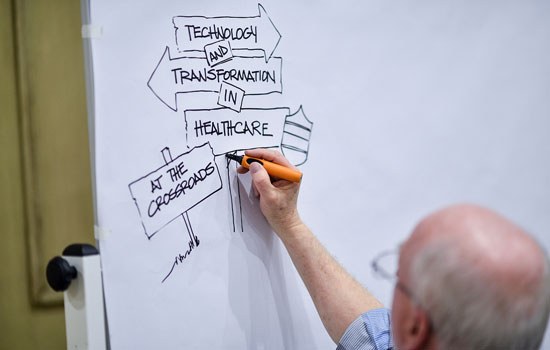 Q&A with Dr. Charlotte Hovet, Dell’s Medical Director of Global Healthcare Solutions
Q&A with Dr. Charlotte Hovet, Dell’s Medical Director of Global Healthcare Solutions
In this second part of our interview series with Dr. Charlotte Hovet, medical director of Global Healthcare Solutions at Dell, we examine what healthcare will look like in 2020 and offer tips for getting started.
What will healthcare look like in 2020?
The world of healthcare will look different in five years and significantly different in 10 years as providers and patients adapt to disruptive change. Technology, consumerism and new payment models are reshaping the delivery of healthcare, and as a result, we can anticipate better care, better health and lower costs. However, that doesn’t mean there won’t be significant stumbling blocks along the way.
I’ve traversed the globe for nearly a decade advocating change and while physicians are quick to adopt new medical devices, they’ve been slow to embrace Electronic Health Records (EHR). And, often for good reasons. New technologies must enhance the effectiveness and efficiency of clinical practice and align with people, process and policy changes. As such, challenges will linger over the next five years as phase two of the EHR continues and progress is made on the integration, interoperability and security fronts.
Full adoption of patient-centered tools will take time and patience as well as assistance to overcome steep learning curves. Moving to a digital world is certainly disruptive but the upside is tremendous—a world of true clinical collaboration and innovation. The ability to deliver integrated services will spawn new care-giving models with expanded scopes and teams outside the traditional clinic and hospital settings.
New technologies like telemedicine will emerge that enable people to have care on a daily basis where they need it most—in their homes. Care teams will be able to reach out to patients in remote areas with a focus on prevention and continuity of care. Whether a person has an acute problem or a chronic disease, the capacity for home care will be greatly enhanced. It will be an exciting time in healthcare as we experience value-based, rather than volume-based, service delivery.
Would you say that value-based healthcare is data-driven healthcare?
Absolutely! Analytics and informatics will be the primary drivers in this newly expanded healthcare view. The knowledge we derive from data changes everything—how we interact with patients and how we diagnose and treat them. Let’s look at University of Iowa Hospitals and Clinics where Dr. John Cromwell is using Dell Statistica to better predict which patients face surgery risks and then determine which medications or wound treatments would be most effective in reducing their chances of acquiring a hospital-acquired infection.
How will predictive analytics be useful in lowering healthcare costs?
Instead of focusing most of our efforts on the high-cost, high-risk group, which currently accounts for three-quarters of our healthcare spending, predictive analytics will enable organizations to focus on the rising risk—the middle group—which is often ignored. If we can identify those people who are at risk for chronic disease and actively intervene before they become high risk, we can make major headway in lowering the cost of healthcare delivery while dramatically improving quality.
What’s the best way to get started?
Healthcare transformation requires alignment of people, processes and technology, which we discussed in a recent webinar. We recommend starting with a readiness assessment to reveal where you do—and don’t—have alignment across the organization.
This can be determined by asking basic questions, such as: What clinical analytics do you need and who holds the key to that information? Who on your staff will mine the data and look for trends? What will be done with that information to change the delivery of healthcare services? What role does governance play in all of this? And, what steps need to be taken once all this knowledge is passed along to the appropriate clinical improvement teams? How will they collaborate to identify trends, turn insights into action and change care delivery?
This iterative process needs to involve the physicians and nurses who are directly involved in delivering care. Future healthcare will be highly collaborative and empower healthcare professionals to identify best practices through analytics as well as how they can use this information to improve decision making and patient care outcomes.
How is Dell helping customers accelerate healthcare transformations?
Dell does a great job of guiding customers along their data-driven journeys by bringing together hardware, software and services to address their needs today while providing an IT platform for the future. Today, we’re proud to be working with some of the leading healthcare organizations, including Dignity Health, HealthMarkets, Beth Israel, Boston Medical Center and more.
In my travels, I meet with chief analytics officers, chief technology officers and chief medical information officers. I tell them about a population analytics project with a hospital in the south. I share highlights of a recent pilot using advanced predictive analytics to identify those at risk for exasperation of asthma or diabetes and the impact on hospital readmissions. I explain how the University of Iowa Hospitals and Clinics has lowered surgery infection risks and subsequently surgery costs.
It’s exciting to share insights, ideas and engage others in healthcare transformation today, so we all can benefit from a new world of healthcare delivery by 2020.
What do you think healthcare will look like by 2020? Email me at john.whittaker@software.dell.com to offer your forecast.
